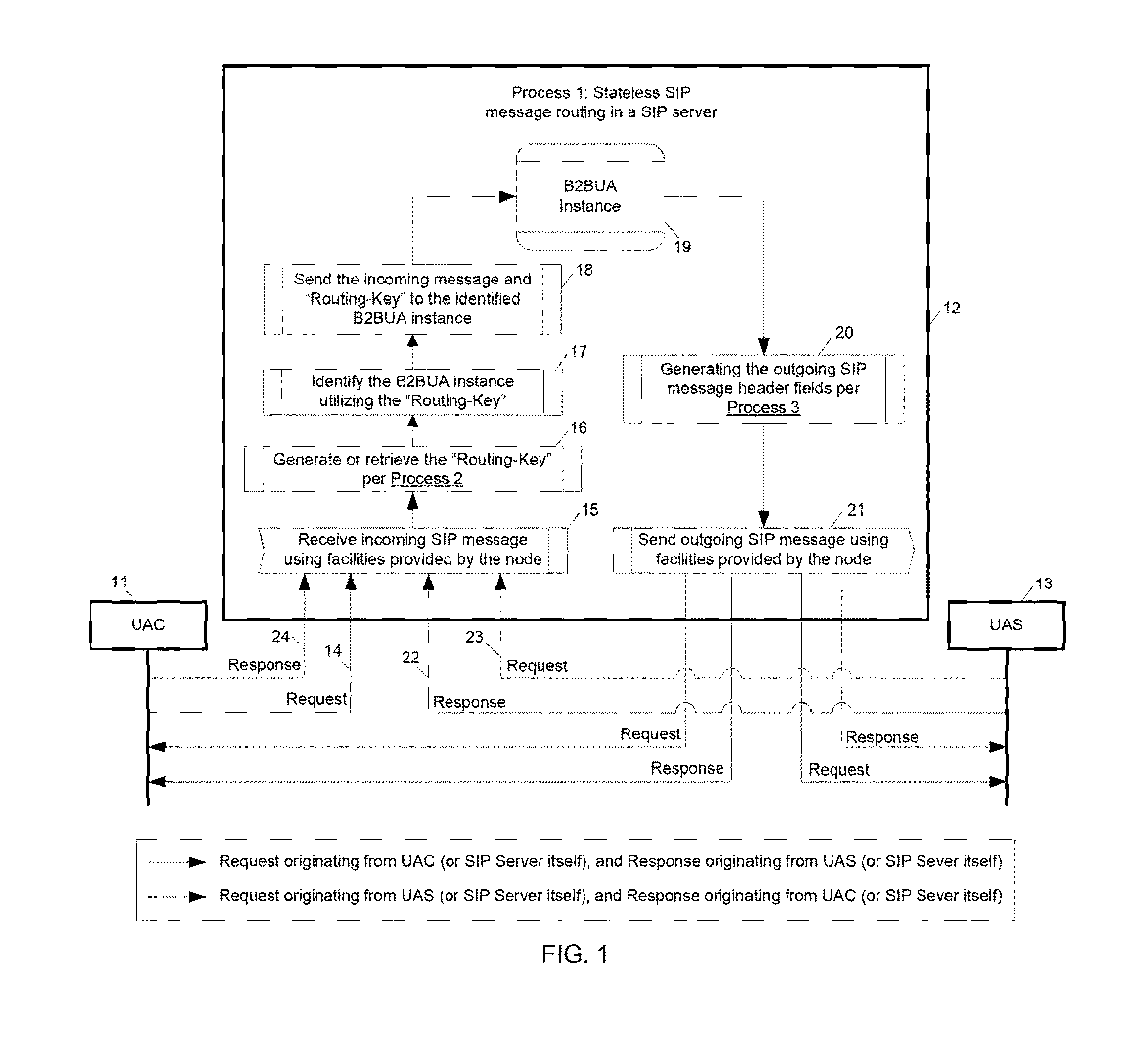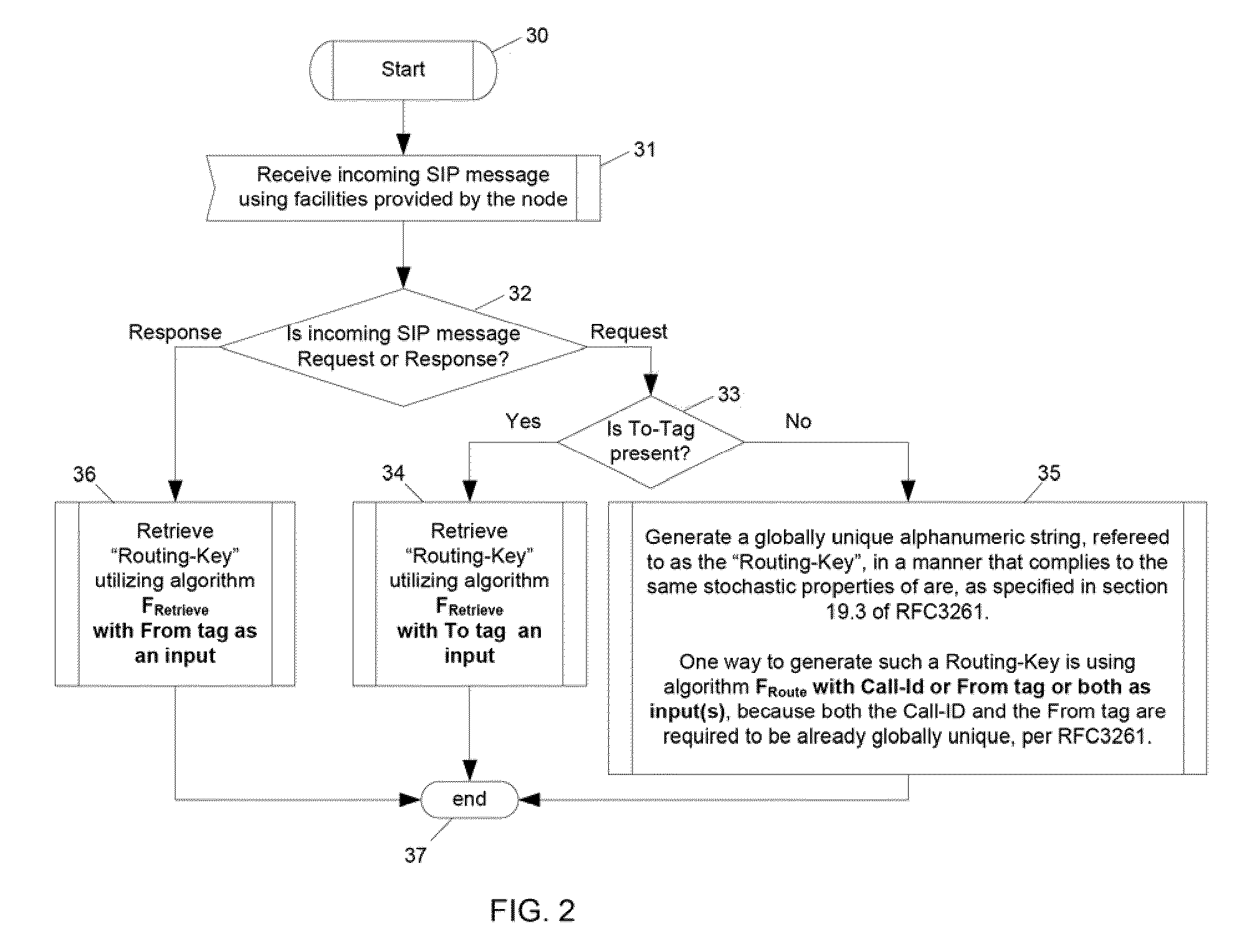Sip-based call session server and message-routing method
a call session server and call session technology, applied in the field of communication systems, can solve the problems of significant design problems, incur significant overhead and cost in routing process management and database management in the signaling plane, and inefficiencies in both the b2bua layer and the routing framework within, and achieve the effect of high suitability for deploymen
- Summary
- Abstract
- Description
- Claims
- Application Information
AI Technical Summary
Benefits of technology
Problems solved by technology
Method used
Image
Examples
example 1
[0041]FGen can be: AES-encryption (Routing-Key, p), where p is the pass phrase used for encryption.
[0042]FRetrieve must be: AES-decryption (T, p), where T is either the From-Tag or the To-Tag, and p is the pass phrase for decryption.
example 2
[0043]FGen can be: Given the Routing-Key is of length N, generate a random alphanumeric character string and prepend the Routing-key to it such that the result has the Routing-Key as the first N characters.
[0044]FRetrieve must be: Collect the first N characters of the From-Tag or the To-Tag.
example 3
[0045]FGen can be: Generate an arbitrary alphanumeric character string of length equal to the Routing-Key, and then interleave the Routing-Key into it, such that, the even numbered position characters of the resultant string are those of the Routing-Key.
[0046]FRetrieve must be: Collect all the even numbered position characters from the From-Tag or the To-Tag, and concatenate the collected characters.
Examples of the Algorithm FRoute Used in the Method 2:
[0047]In the examples below, the output of the FRoute algorithm, which takes the Call-ID and / or the From-Tag of the incoming SIP request message, is the generated Routing-Key.
PUM
 Login to View More
Login to View More Abstract
Description
Claims
Application Information
 Login to View More
Login to View More - R&D
- Intellectual Property
- Life Sciences
- Materials
- Tech Scout
- Unparalleled Data Quality
- Higher Quality Content
- 60% Fewer Hallucinations
Browse by: Latest US Patents, China's latest patents, Technical Efficacy Thesaurus, Application Domain, Technology Topic, Popular Technical Reports.
© 2025 PatSnap. All rights reserved.Legal|Privacy policy|Modern Slavery Act Transparency Statement|Sitemap|About US| Contact US: help@patsnap.com



